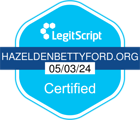Hazelden Betty Ford: Treatment Results and Patient Outcomes
Today, as the world faces an addiction and mental health crisis of historic proportion, Hazelden Betty Ford’s breakthrough approach is needed more than ever—advancing treatment that works and recovery that lasts.






Helping People Outlive the Disease of Addiction
We are ready to help you outlive this chronic disease. Our ongoing patient monitoring shows that twice (2x) as many of our patients report continuous sobriety during the year after treatment than industry rates found in addiction treatment research.
The patient data supports the effectiveness of our clinical model of care, measured by the length of sobriety, management of cravings and other indicators well-being—revealing the benefits of treatment.
With the right care, support and time, recovery from substance use disorders isn’t just the norm. Recovery is the catalyst for an all-around better quality of life.
The Research Is In
The Hazelden Betty Ford Foundation is redefining addiction treatment that helps patients outlive their disease. We stay at the forefront of addiction treatment by doing our own groundbreaking research. The latest patient outcomes data, monitored and analyzed by Hazelden Betty Ford’s Butler Center for Research, demonstrate the sweeping impact of our treatment in real-life terms for families. This outcomes data analysis marks a first in our industry—a multiyear, comprehensive survey on patients during and after treatment with Hazelden Betty Ford.
About the Butler Center for Research
Hazelden Betty Ford has documented the effectiveness of its treatment programs from the very start, with the first patient follow-up report issued in 1950. Led by PhD-level clinicianresearchers, the Butler Center for Research maintains the integrity of our outcomes by operating separately from clinical care and using evidence-based research methods backed by third-party National Institutes of Health advisors. The Butler Center for Research continues our rigorous search for increasingly effective treatment solutions.
